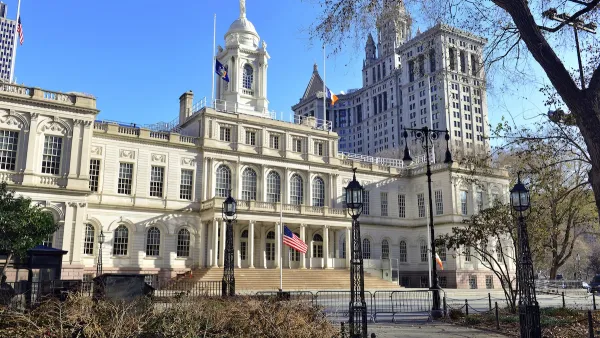The fortress-like underground structure posed unique challenges to engineers redeveloping a former U.S. Army complex.

A Washington, D.C. adaptive reuse project is making creative use of a six-decade-old underground parking garage, reports Andy Peters for CoStar.
The Parks at Walter Reed development is a 67-acre redevelopment project transforming the former Walter Reed Army Hospital property now being developed by Hines, Urban Atlantic, Triden Development Group and Bridge Investment Group. According to Peters, “The Parks at Walter Reed developers decided to convert the existing Army-built garage as a way to limit the project's carbon emissions. One way to limit carbon is to renovate existing structures rather than build new, a process that often requires pouring thousands of cubic yards of new concrete.”
However, the garage was built differently than most, likely designed and reinforced to withstand a military air attack. “The designers later discovered that the U.S. Army Corps of Engineers left behind only threadbare information about the garage’s building specs. Blueprints that were located were missing pages and some pages were mangled and illegible.” The developers used 3D laser scanning to scan the entire structure for accurate measurements, and engineers discovered a slew of irregularities.
To date, “About 70% of the residential segment of the project is complete and includes condos, apartments, townhouses, senior housing, assisted living and coliving units, according to a Hines spokeswoman.” The garage is now operational and can accommodate 840 vehicles.
FULL STORY: Parking, under fire in many US cities, posed a different problem for architects on Washington, DC, project

National Parks Layoffs Will Cause Communities to Lose Billions
Thousands of essential park workers were laid off this week, just before the busy spring break season.

Retro-silient?: America’s First “Eco-burb,” The Woodlands Turns 50
A master-planned community north of Houston offers lessons on green infrastructure and resilient design, but falls short of its founder’s lofty affordability and walkability goals.

Delivering for America Plan Will Downgrade Mail Service in at Least 49.5 Percent of Zip Codes
Republican and Democrat lawmakers criticize the plan for its disproportionate negative impact on rural communities.

Test News Post 1
This is a summary

Test News Headline 46
Test for the image on the front page.

Balancing Bombs and Butterflies: How the National Guard Protects a Rare Species
The National Guard at Fort Indiantown Gap uses GIS technology and land management strategies to balance military training with conservation efforts, ensuring the survival of the rare eastern regal fritillary butterfly.
Urban Design for Planners 1: Software Tools
This six-course series explores essential urban design concepts using open source software and equips planners with the tools they need to participate fully in the urban design process.
Planning for Universal Design
Learn the tools for implementing Universal Design in planning regulations.
EMC Planning Group, Inc.
Planetizen
Planetizen
Mpact (formerly Rail~Volution)
Great Falls Development Authority, Inc.
HUDs Office of Policy Development and Research
NYU Wagner Graduate School of Public Service





























